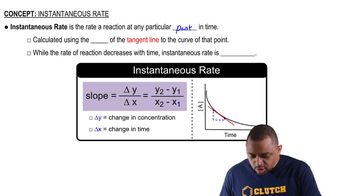Here are the essential concepts you must grasp in order to answer the question correctly.
Radiocarbon Dating
Radiocarbon dating is a method used to determine the age of organic materials by measuring the amount of carbon-14 (14C) remaining in a sample. Living organisms continuously take in carbon, including 14C, until they die. After death, the 14C decays at a known rate, characterized by its half-life of 5730 years, allowing scientists to estimate the time since the organism's death based on the remaining 14C activity.
Half-Life
Half-life is the time required for half of the radioactive nuclei in a sample to decay. For carbon-14, this period is approximately 5730 years. Understanding half-life is crucial for calculating the age of ancient organic materials, as it provides a consistent measure of decay that can be used to relate the remaining amount of 14C to the time elapsed since the organism's death.
Recommended video:
Disintegration Rate
The disintegration rate refers to the number of radioactive decays occurring in a sample per unit time, typically measured in disintegrations per minute (dpm). In the context of radiocarbon dating, comparing the disintegration rates of a sample to that of a living organism allows for the calculation of the sample's age. The difference in activity levels indicates how much time has passed since the organism ceased to take in carbon.
Recommended video:




